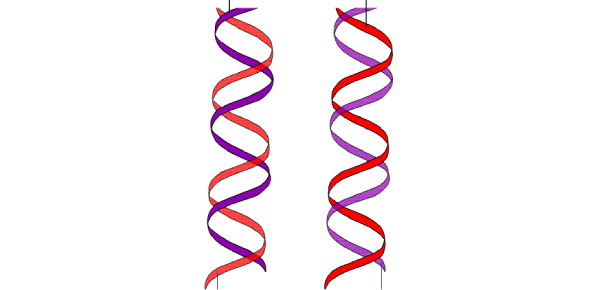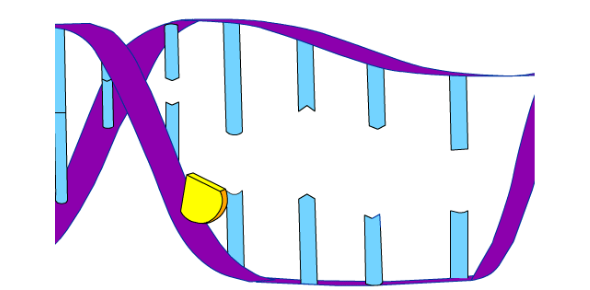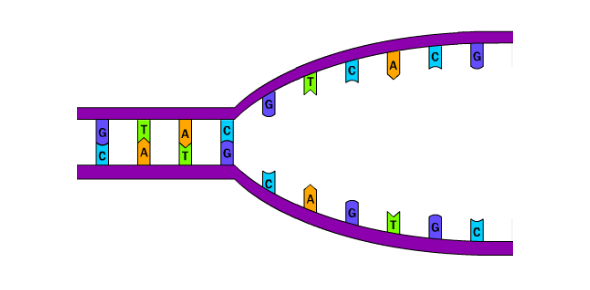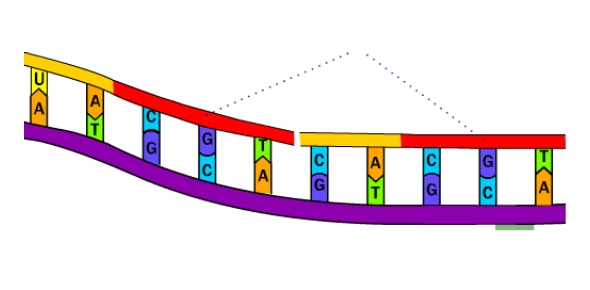DNA Replication Quiz Questions And Answers
(175).jpg)
Welcome to our DNA Replication Quiz, where you'll embark on an enlightening journey into the intricate world of molecular biology. DNA replication is a fundamental process in genetics, essential for cell division and the transmission of genetic information. In this quiz, you'll explore the mechanisms, enzymes, and stages involved in DNA replication.
Challenge yourself with questions about the structure of DNA, the roles of DNA polymerase and helicase, and the significance of replication forks. Delve into the complexities of leading and lagging strand synthesis, Okazaki fragments, and the proofreading mechanisms that ensure genetic fidelity.
Test your understanding of Read morereplication origins, telomeres, and the regulatory factors that govern the timing and accuracy of DNA replication. Whether you're a student of biology, a researcher in the field, or simply curious about the molecular basis of life, this quiz offers a stimulating opportunity to deepen your knowledge and appreciation of DNA replication.
DNA Replication Questions and Answers
- 1.
Which of the following enzymes is NOT directly involved in DNA replication?
- A.
DNA polymerase
- B.
Helicase
- C.
Ligase
- D.
Amylase
Correct Answer
D. AmylaseExplanation
DNA replication is the process of creating an identical copy of a DNA molecule. Key enzymes facilitate this process: DNA polymerase adds nucleotides to the new strand, helicase unwinds the double helix, and ligase joins fragments on the lagging strand. Amylase, however, is an enzyme involved in carbohydrate digestion, not DNA replication.Rate this question:
-
- 2.
DNA replication is ____________________________, with each __________________ acting as a template for the synthesis of a complementary _______________.
- A.
Semi-conservative, parental strand, new strand
- B.
Parental strand, semi-conservative, new strand
- C.
Semi-conservative, new strand, parental strand
- D.
None of the above
Correct Answer
A. Semi-conservative, parental strand, new strandExplanation
During DNA replication, the process is semi-conservative, meaning that each new DNA molecule consists of one strand from the original parental DNA and one newly synthesized strand. The parental strand serves as a template for the synthesis of a complementary new strand, resulting in the formation of two identical DNA molecules. This ensures the accurate transmission of genetic information from one generation to the next.Rate this question:
-
- 3.
Which enzyme, responsible for breaking apart the hydrogen bonds between two DNA strands, is pictured above?
- A.
Histone
- B.
Helicase
- C.
Exonuclease
- D.
Endonuclease
Correct Answer
B. HelicaseExplanation
Helicase is the enzyme that unzips the DNA double helix by breaking the hydrogen bonds between the two strands. This happens during DNA replication, allowing each strand to serve as a template for creating new DNA strands. Helicase works by attaching to the DNA and moving along it, separating the strands like a zipper being unzipped. This action is crucial because it prepares the DNA for the replication process, ensuring that each new cell has a complete and accurate copy of the DNA.Rate this question:
-
- 4.
What is pictured above in the DNA replication process?
- A.
Replication bubble
- B.
Leading strand
- C.
Lagging strand
- D.
Ligase
- E.
Replication fork
Correct Answer
E. Replication forkExplanation
The picture above shows the replication fork in the DNA replication process. The replication fork is the point where the DNA double helix is unwound and the new strands are being synthesized. It is formed by the separation of the two parent DNA strands, and it moves along the DNA molecule as replication proceeds. The replication fork is crucial for the accurate and efficient replication of DNA.Rate this question:
-
- 5.
Which strand grows continuously towards the replication fork?
- A.
Lagging strand
- B.
DNA strand
- C.
RNA strand
- D.
Replicating strand
- E.
Leading strand
Correct Answer
E. Leading strandExplanation
The leading strand is the DNA strand that grows continuously towards the replication fork during DNA replication. Unlike the lagging strand, which is synthesized in short segments called Okazaki fragments, the leading strand is synthesized in a smooth, continuous manner. This is because the DNA polymerase enzyme, which adds new nucleotides to the growing strand, can follow the opening of the DNA helix by helicase directly on the leading strand. The process is more straightforward and efficient on the leading strand due to its orientation relative to the direction of replication.Rate this question:
-
- 6.
DNA polymerase III builds new strands from scratch during DNA replication. True or False?
- A.
True
- B.
False
Correct Answer
B. FalseExplanation
False. DNA polymerase III does not build new strands from scratch during DNA replication. Instead, it adds nucleotides to an existing template strand, synthesizing a complementary strand in the 5' to 3' direction. This process is known as semi-conservative replication.Rate this question:
-
- 7.
What enzyme replaces the RNA primer on the leading strand with DNA?
- A.
Polymerase III
- B.
Ligase
- C.
Polymerase I
- D.
Helicase
Correct Answer
C. Polymerase IExplanation
In DNA replication, DNA Polymerase I plays a crucial role in prokaryotic organisms. It removes the RNA primers (which are initially laid down for DNA polymerases to begin synthesis) from the lagging strand and fills in the necessary regions with DNA. While the question specifies the leading strand, typically RNA primers are used more crucially in the lagging strand; however, if an RNA primer were to be on the leading strand, DNA Polymerase I would also replace it there. DNA Polymerase III is the enzyme primarily responsible for the synthesis of new DNA strands but does not replace RNA primers. DNA Ligase then seals the gaps between the newly synthesized DNA fragments (Okazaki fragments on the lagging strand), creating a continuous double strand. Helicase is responsible for unwinding the DNA double helix.Rate this question:
-
- 8.
The lagging strand is the new strand that grows discontinuously away from the replication fork.
- A.
True
- B.
False
Correct Answer
A. TrueExplanation
The lagging strand is the strand of DNA that is synthesized in short fragments called Okazaki fragments. This occurs because DNA replication can only proceed in the 5' to 3' direction, but the two strands of DNA run in opposite directions. As a result, the lagging strand is synthesized in the opposite direction of the replication fork, causing it to grow discontinuously. This is in contrast to the leading strand, which is synthesized continuously in the same direction as the replication fork. Therefore, the statement that the lagging strand grows discontinuously away from the replication fork is true.Rate this question:
-
- 9.
What is the name of the fragments of the lagging strand pictured above?
- A.
Binding proteins
- B.
Fragmenting lagging strand
- C.
Okazaki segments
- D.
Coding strands
Correct Answer
C. Okazaki segmentsExplanation
Okazaki segments are short fragments of DNA that are synthesized on the lagging strand during DNA replication. They are formed because DNA synthesis can only occur in the 5' to 3' direction, and the lagging strand is synthesized in the opposite direction. As a result, the lagging strand is synthesized in short segments, which are later joined together by an enzyme called DNA ligase. Okazaki segments are named after the Japanese scientist Reiji Okazaki, who first discovered and described them.Rate this question:
-
- 10.
What enzyme will fix this problem in the lagging strand? (Pay attention to the red section in the picture).
- A.
Ligase
- B.
Binding proteins
- C.
Helicase
- D.
Polymerase I
Correct Answer
A. LigaseExplanation
Ligase is the enzyme that will fix the problem in the lagging strand. It is responsible for joining the Okazaki fragments, which are short segments of DNA that are synthesized discontinuously on the lagging strand during DNA replication. Ligase catalyzes the formation of phosphodiester bonds between adjacent nucleotides, sealing the gaps between the Okazaki fragments and creating a continuous strand of DNA. This ensures the completion of DNA replication on the lagging strand.Rate this question:
-
- 11.
The new DNA strand formed after DNA replication is an exact copy of its parent strand. True or False?
- A.
True
- B.
False
Correct Answer
A. TrueExplanation
DNA replication is a process by which a DNA molecule is copied to produce two identical DNA molecules. The process is semi-conservative, meaning that each new DNA molecule contains one strand from the original DNA molecule and one newly synthesized strand. The new strand is formed by complementary base pairing, where adenine (A) always pairs with thymine (T), and guanine (G) always pairs with cytosine (C). This ensures that the new strand is an exact copy of the original strand.Rate this question:
-
- 12.
What is the key element that prevents the strands from binding back together once they are separated during DNA replication?
- A.
Binding proteins
- B.
Ligase
- C.
Helicase
- D.
DNA wall
Correct Answer
A. Binding proteinsExplanation
Binding proteins, often referred to as single-strand binding proteins (SSBs), play a crucial role during DNA replication by preventing the separated DNA strands from reattaching to each other. After helicase unwinds the DNA, exposing the single strands, these binding proteins quickly attach to the single strands. By coating the DNA strands, they stabilize them and keep them apart, ensuring that the strands remain straight and available as templates for the synthesis of new DNA strands. This protection helps maintain the integrity and efficiency of the replication process.Rate this question:
-
- 13.
What enzyme is responsible for sealing breaks in the DNA backbone during replication?
- A.
Helicase
- B.
DNA Polymerase
- C.
Ligase
- D.
Primase
Correct Answer
C. LigaseExplanation
Ligase is essential for DNA replication because it "glues" or seals breaks in the DNA backbone that occur during the replication process. After DNA polymerase synthesizes new DNA strands, there are still discontinuities between segments of DNA, especially on the lagging strand where the Okazaki fragments form. Ligase repairs these breaks by forming covalent bonds between the sugar and phosphate groups of adjacent DNA nucleotides, thus completing the structure of the newly synthesized DNA.Rate this question:
-
- 14.
What is the primary role of RNA primase in DNA replication?
- A.
Synthesizing RNA primers
- B.
Unwinding the DNA helix
- C.
Joining Okazaki fragments
- D.
Proofreading the new DNA
Correct Answer
A. Synthesizing RNA primersExplanation
The primary function of DNA polymerase during DNA replication is to add nucleotides to the growing DNA strand. It reads the existing template strand and adds complementary nucleotides to the new strand, ensuring the accurate replication of the genetic material. DNA polymerase also plays a role in proofreading and correcting errors in the newly synthesized DNA, which is crucial for genetic fidelity and cell function.Rate this question:
-
- 15.
Which enzyme unwinds the DNA double helix at the replication fork?
- A.
Ligase
- B.
Helicase
- C.
Primase
- D.
DNA Polymerase
Correct Answer
B. HelicaseExplanation
Helicase is the enzyme responsible for unwinding the DNA double helix at the replication fork. It breaks the hydrogen bonds between the base pairs of the two DNA strands, allowing each strand to serve as a template for the synthesis of a new complementary strand. This action of helicase is critical to exposing the bases so that DNA polymerase can read and replicate them, a crucial step in the DNA replication process.Rate this question:
-
- 16.
Which enzyme corrects errors in the newly synthesized DNA strand?
- A.
Primase
- B.
Polymerase
- C.
Helicase
- D.
Ligase
Correct Answer
B. PolymeraseExplanation
DNA polymerase not only adds nucleotides to the growing DNA strand but also performs a crucial error-checking function. As it synthesizes the new DNA, it continuously checks for any mismatched bases. If it finds an error, DNA polymerase can remove the incorrect nucleotide and replace it with the correct one. This proofreading ability is vital for maintaining the DNA's integrity and preventing mutations, which could lead to genetic disorders or cell malfunction.Rate this question:
-
Quiz Review Timeline +
Our quizzes are rigorously reviewed, monitored and continuously updated by our expert board to maintain accuracy, relevance, and timeliness.
-
Current Version
-
Dec 16, 2024Quiz Edited by
ProProfs Editorial Team
Expert Reviewed by
Lindsey Block -
Apr 28, 2009Quiz Created by
Karaleee
 Back to top
Back to top







